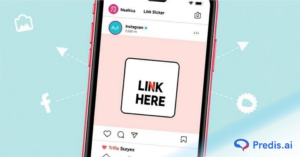Running Instagram ads without A/B testing is just like shooting arrows in the dark. In today’s world, Instagram continues to be a powerful platform, especially for visual marketing. But this does not mean that the competition is less; it is still fierce. Brands that win today don’t just guess; they test. A/B testing allows you to experiment with different ad elements to find what truly connects with your audience. Whether you’re a small business or a performance marketer, this guide will show you exactly how to A/B test Instagram ads, step by step, so you can drive better engagement, reduce costs, and skyrocket conversions.
Let’s dive in.
What is A/B Testing for Instagram Ads?
A/B testing is also known as split testing. It involves comparing two versions of an ad to see which one performs better. You can change one variable at a time, like the image, headline, or CTA, while keeping everything else constant. This method provides data-driven insights into what is working well with your audience.

Why A/B Testing Instagram Ads is Important?
Your creativity may be perfect, but facts can prove it. A/B testing:
- Finds effective advertising aspects
- Spends smarter by reducing budget waste
- Improves ROI over time by reducing ad spend and improving overall conversion rate
- Helps identify what works rather than making assumptions
A/B testing is necessary to scale Instagram ad performance.
What Elements Can You A/B Test in Instagram Ads?
Insights won’t be gained from testing random components. Here is a list of things you can and should test to get the most out of them:
Ad Creatives
People will first notice what you look like. Test it out:
- Image vs. Video: People are more likely to watch videos, but high-quality pictures can be made faster.
- Color schemes and filters: When it comes to color schemes and shades, a warmer tone can work better than a cooler one sometimes.
- UGC vs. branded visuals: User-generated content (UGC) is more likely to feel real and relatable than branded images.
You can create AI-powered ad creatives using the Predis AI ad generator!
Ad Copy
Your writing needs to go with your picture. You can do an A/B test:
- Headlines: See which tone is more emotional or accurate.
- CTA buttons: Saying “Shop Now” or “Learn More” can make people do different things.
- Captions: Compare short, punchy lines to longer ones that tell a story.
Audience Targeting
Even the best ad will fail if it’s shown to the wrong audience. You need to experiment with the following:
- Demographics: Age, gender, and location.
- Behavioral segments: Target those who added to cart vs. first-time visitors.
- Lookalike vs. interest-based audiences: Each has its pros, depending on your goals.
Ad Placement & Formats
Don’t assume that one format will fit all. This is how you can test:
- Feed vs. Stories vs. Reels: Reels might outperform for video creatives, while Stories are better for urgency.
- Carousel vs. Single Image Ads: Showcase variety or keep it focused, test to know.

Advanced A/B testing strategies
Here are some advanced A/B testing strategies that you can use to find the best creative combination:
- Multi-variable testing: In this method, you can test different elements of an ad at a time.
- Sequential testing: Running a test at a time, finding the best version, and implementing it before moving on to the next test.
- AI tools: Using AI tools to derive possible conclusions that you otherwise might not have thought of.
Step-by-Step Guide to A/B Testing Instagram Ads
Step 1 – Define a Clear Goal
Before you test anything, you should know what you’re trying to improve. Are you aiming for a higher click-through rate (CTR), more sales, or better engagement?
Set one goal per test. This will help to keep your results focused and actionable.
Step 2 – Pick One Variable at a Time
The golden rule of A/B testing is to isolate a single variable. If you change too many things at a time, you will never know what led to the improvements and what not.
For example, if you’re testing the CTA, don’t change the image along with the CTA. Keep everything else the same.
Step 3 – Create Two Ad Variants
Use Meta Ads Manager to duplicate your original ad. Change only one element that you’re testing. For example:
- Ad A: “Get 20% Off Now” CTA
- Ad B: “Shop the Collection” CTA
Keep your target audiences, placements, and budgets identical for both versions, so that you can get to know what exactly performed.
Step 4 – Set Up Testing Parameters
For reliable results, follow the steps below:
- Run the test for at least 5–7 days
- Ensure each ad gets enough impressions, a minimum of 1,000 per ad
- Use equal budgets for both of the ads.
Step 5 – Run the Test & Collect Data
You need to run your ads uninterrupted. Always resist the urge to change things in the early stages. You need statistically significant data to make a confident decision for future campaigns!
Use Meta Ads Manager’s “A/B Test” feature for structured insights or monitor manually using UTM parameters and Google Analytics.
Step 6 – Analyze Performance Metrics
Don’t rely solely on vanity metrics like impressions. Focus on the following as well:
- CTR (Click-Through Rate)
- CPC (Cost Per Click)
- Conversions or sales
- Engagement metrics (likes, shares, saves)
Compare the results and identify which variant met your goal more effectively.
Step 7 – Apply Insights to Future Campaigns
Once you are clear which ad copy is the winner, you need to scale it. Use the insights to create better ads in your next campaign.
Remember—what works now may not work forever. Keep testing to stay ahead.
Tools You Can Use to A/B Test Instagram Ads
You don’t have to go through it alone. Below are the tools that will help you to streamline your A/B testing process:
- Meta Ads Manager – This tool offers native testing features with control over variables and audiences.
- AdEspresso – Great for managing multiple tests and getting visual reports.
- Hootsuite Ads – Combines scheduling and analytics in one platform.
- Smartly.io – Ideal for scaling high-budget, dynamic campaigns.
- Google Analytics + UTM tags – For tracking down-funnel actions like purchases or sign-ups.
Choose tools based on your budget and how detailed you want your tests to be.
Best Practices To Keep In Mind
When making A/B testing, there are a couple of things that you need to take into account:
- Run A/B tests during high-activity hours, which can vary from account to account. Check out your Instagram insights to find out when your audience is active and schedule the tests at that time.
- Test small changes at a time so that you know what impacted the conversion rates.
- Take feedback into account and implement the changes when A/B testing. As a result, your testing process will be closely tied to the overall strategy.
Common A/B Testing Mistakes to Avoid
Below are some of the most common mistakes that even experienced marketers make:
- Testing too many variables at once: This meddles with your actual results. You should always stick to one change per test.
- Running tests for too short: Let your ads run long enough for valid data.
- Ignoring statistical significance: Don’t jump to conclusions early; always use data-backed decisions.
- Not tracking conversions: CTR alone doesn’t tell you the full story. An ad might get clicks but fail to drive sales, sign-ups, or any meaningful action that impacts your ROI.
Avoid these pitfalls, and you’ll save both time and money.
Real-Life Brand Examples of A/B Testing Success
Example 1 – MeUndies Increased Subscriptions with UGC
What they tested:
MeUndies, the underwear brand, ran A/B tests comparing polished product photos vs. user-generated content (UGC) featuring real customers.
What worked:
The UGC version significantly outperformed the studio shots—CTR increased by 40%, and subscription conversions jumped by 35%. This showed the power of authenticity and social proof in visual storytelling.

Example 2 – Canva Boosted App Installs by Tweaking Ad Copy
What they tested:
Canva ran multiple split tests on Instagram to compare different CTA texts. One ad said “Design Anything. Anytime,” while the other said “Start Designing for Free.”
What worked:
The “Start Designing for Free” CTA led to 2x more app installs. The clear value proposition and direct incentive made it more actionable, especially for new users.

Example 3 – Glossier Improved Engagement with Story Placement
What they tested:
Glossier tested Instagram feed ads vs. Instagram Story ads for launching a new skincare product. The visuals and copy remained the same, with only the placement being tested.
What worked:
Story ads had 25% higher engagement and a lower CPC by 18%. The full-screen, immersive format encouraged more swipe-ups and product clicks, especially from mobile-first users
Pro Tips to Get the Best A/B Testing Results
- Improvement is always possible. Consumer behavior and trends change, so what works now may not work tomorrow. Retesting advertising helps you remain ahead and improve performance.
- Every test should be backed by a clear hypothesis. Randomly switching elements without understanding why can lead to confusion and your budget being wasted. Define your objective before launching each test to get actionable insights.
- Testing ad variants on warm audiences, such as those who’ve already interacted with your brand, often yields quicker and more reliable results. These users are familiar with your offerings, making it easier to gauge subtle differences in ad performance.
- Keep a detailed record of each test, including what you tested, the outcome, and insights gained. This helps you to build a performance playbook that will guide your future campaigns. This will also prevent you from repeating past mistakes.
- Over time, these small wins will compound to big results.

Conclusion
In today’s competitive digital world, solely relying on your gut feeling is not enough. A/B testing will empower you with data to make smarter and more profitable decisions.
By following a structured A/B testing strategy for your Instagram ads, you will avoid wasting ad spend and will discover what truly works for your target audience. Keep testing, stay curious, and watch your ROI soar.
FAQ:
A/B testing in Instagram ads is when two versions of the same ad are created with only one small variation. These variations could be anything, like different wording, color variation, CTA placement, and so on. Then these ads are run simultaneously to find out which gets more conversions.
By A/B testing your Instagram ads, you get to see what works best with your audience. And by using that version, you can improve ROI, boost engagement, and find out the best creative combinations.
Some of the elements that you can test in your Instagram ads:
1. Headline copy
2. CTA and its placement
3. Ad creatives (images or videos)
4. Ad placement
5. Targeting different audience segments
6. Landing page copy
Related Posts,
















